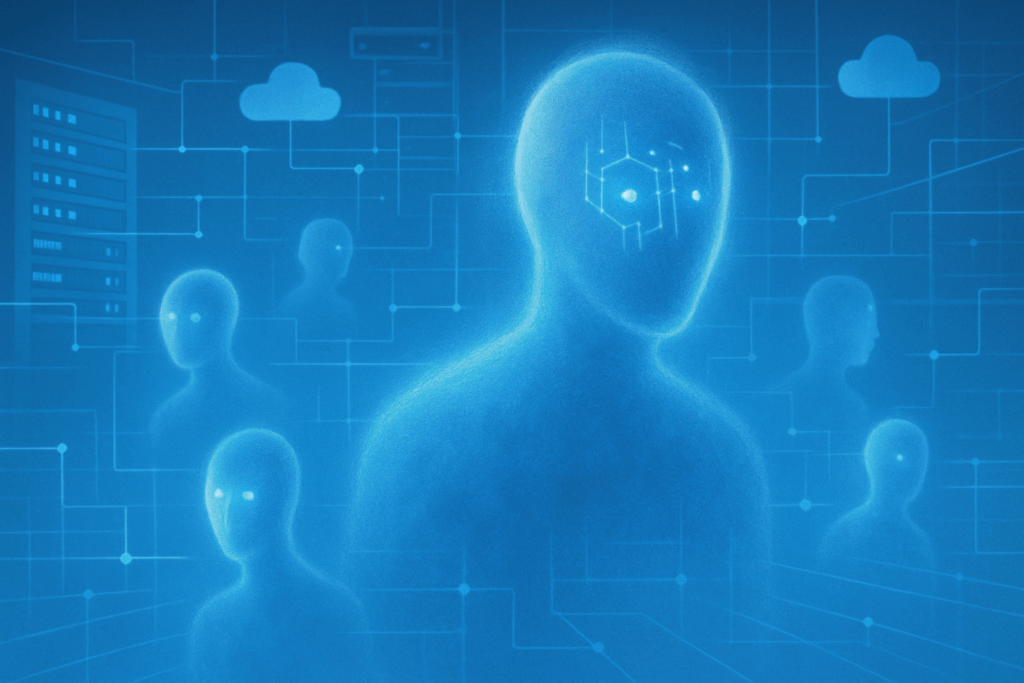I’ve been looking forward to the first games using NVIDIA ACE for some time. NVIDIA ACE is the tool that creates AI NPCs, but its usefulness goes well beyond just games and into simulations and training where you want people, cars, robots, animals, etc. to behave more realistically. Check out this video from the game Mecha BREAK to see how this plays out. While this is clearly a recorded interaction, in game play, the player can interact with this NPC as if it was a real human and not have to guess what phrase sequence was needed to progress from task to task. It can even ask the NPC questions about things not related to game play and get a human-like response.
Let’s talk about why this will be a huge improvement to games, simulations and training this week.
AI NPCs
Non-Player Characters (NPCs) have improved in appearance over the years, but their depth has remained static. You know you aren’t talking to a person; you know you have to use some kind of script, but you often don’t know what that script is, which makes immersion in the game impossible and significantly detracts from the gaming experience.
But if you can make NPCs seem more realistic, you can do some interesting things. For instance, if you can’t find a team to play with for a group exercise, an AI NPC(s) could be supplied instead, allowing you to have fun as if you are playing with others even if you are really playing alone. In addition, there are a lot of badly behaved gamers and griefers out there, so for parents worried about what might happen to their kids, particularly kids that have already been traumatized or who are vulnerable due to their age, you could set the game so they only played with safe NPCs and reduce the potential for bullying, abuse or other actions that put kids that game on-line at risk.
AI Moderators
In addition, while moderators in games are common, the moderators are typically overworked and understaffed against the hose of gamers they moderate. But an AI moderator could operate at scale, observe the interactions between players, and step in if necessary to protect a player that was being attacked, treated unfairly or in need of help.
This would not only improve game play but help to reduce the concerns surrounding kids playing these games with adults who sometimes don’t behave as they should around children. I remember an early VR effort by Microsoft that was targeted at young women. When I was evaluating it, some married guy with two daughters created a penis avatar so he could hop around and talk to them. I was already uncomfortable playing this game, but after I reported this, Microsoft killed the effort shortly thereafter.
And this wasn’t the first time I caught a mistake like this. It’s easy to forget there are a lot of folks out there who think that laws and good behavior no longer apply to them when they are online, and they can kill a game if they become too numerous. So, these NPC moderators could also help prevent a really bad gaming outcome that could damage the gaming company’s brand or reputation. A game for kids with a lot of pedophiles playing it would not end well.
Training and Simulation
This doesn’t just work for games. We are using gamification to train people in a lot of new skills, and AI is increasingly used in these efforts. But having an NPC as a trainer that never got frustrated, never lost their temper or never gave a wrong answer because they didn’t know the right one, would be massively helpful in training. And an AI NPC could become that trainer, making for a safe learning experience customized for the student so they can learn at their own pace instead of one set by the teacher or training materials.
Applied to courses on driving, using heavy machinery, or even scientific experimentation done in simulation, you would end up with a far safer training area, one that was in the virtual world rather than the real one, and one where the trainer was customized to the student. And you could even transfer the trainer to the system in the vehicle, machine or lab so that after the training, the student would still have 24/7 access to the trainer whenever they had a question or just needed someone they trusted to talk to who wouldn’t run to management.
To that last, there was an instance in a company I worked with where a third line manager met and wanted to date a woman two levels below him, and she wanted to date him. So, he went to a peer who he thought of as a friend and asked if he could transfer the woman he wanted to date to the friend’s organization. She had an opening, so he wouldn’t be violating policy. This friend turned him into HR and both he and the woman he wanted to date were fired under the firm’s zero tolerance policy, which was painfully ironic given they were both clearly trying to do the right thing. Everyone at every level needs someone they can ask difficult questions of without worrying about repercussions from asking the question. AI NPCs could fill that role.
Wrapping Up: NVIDIA ACE Is Far Bigger Than People Think
I think NVIDIA ACE may be one of the most important offerings anyone has yet made for AI. It could create virtual companions for the forgotten elderly, help employees with difficult decisions, and make game playing far more fun and safer than it currently is. It is truly a game changer and a critical part of making AI a bigger part of our lives. It’s also a tool that could help us be better game players, employees, and, potentially, even better people if it is focused on helping us better interact with others. So much of our behavior comes from unstructured, accidental learning, and it would truly help to have modules that helped us understand how to improve how we interact socially as well as professionally. ACE could even help with that.
NVIDIA ACE will become a major part of how we interact with AI going forward, and I, for one, can’t wait to play with it!



